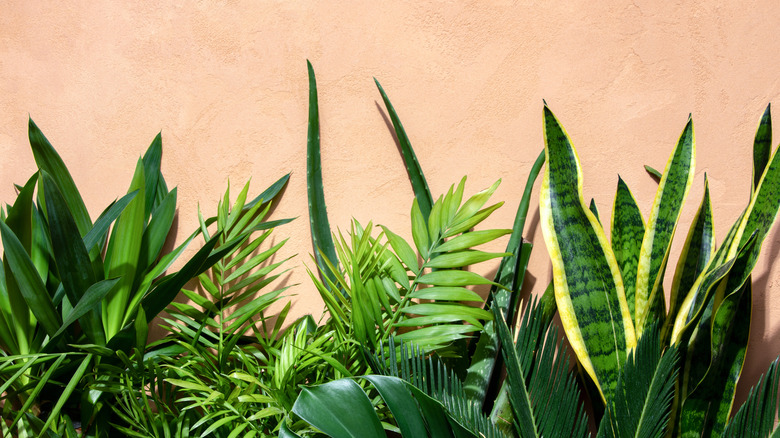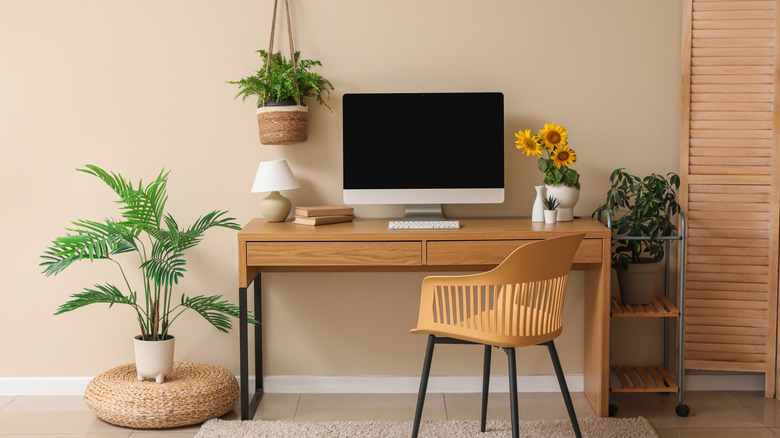You've Been Spacing The Plants In Your House All Wrong And They're Suffering
Just imagine: You come home after a long day, unlock your door, and step into a lush green jungle. Your space is teeming with houseplants, and it's wonderful — maybe even good for your health. But while your close-knit indoor forest is beautiful, your houseplants may indeed be too close together — negatively affecting their growth and long-term health. Sure, it's easier — and sometimes beneficial — to keep your indoor plants all in one spot, but if their leaves are touching or even intertwining, your plants are a little too intimate.
The number-one factor to consider when spacing your plants is air circulation. You may have heard that a moist environment is good for most plants, but did you know that lack of airflow between your houseplants can actually lower humidity? Also, if your plants are touching, it's easier for pests to jump ship and spread, turning a one-plant nuisance into a total infestation. Another little-known fact about too-close houseplants is that when plants touch each other, a stress response can occur, and one plant can easily coil around and overtake the other.
How to safely arrange your plants
We get it: Keeping your plants at a safe distance from each other can be tough, especially when working with small spaces and varied lighting conditions. But with a few key rules of thumb, you can keep your jungle family "socially distanced" and living their best lives. First, make sure to space plants far enough apart that their leaves or branches do not touch, and keep an eye on them, especially during their peak growing seasons, to ensure that they don't reach toward each other. The goal is to allow air to circulate around and between each plant.
Another basic, but related, tip for keeping your houseplants healthy is to quarantine all new plants away from your existing collection — yes, that may mean keeping it in a separate room — for at least 40 days. During that time, keep a close eye on the new plant, watching for signs of pests or disease.
If you're struggling for space, give your climbing plants a place to grow by repurposing an old over-the-toilet storage shelf, or DIY a modern wooden plant stand without spending big bucks. You may also try getting creative with how you display your plants, and add a touch of charm with this DIY macrame plant hanger.

